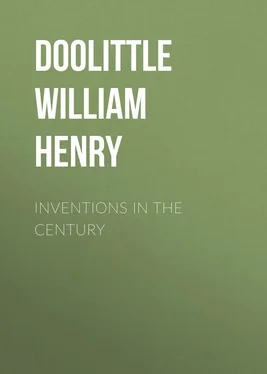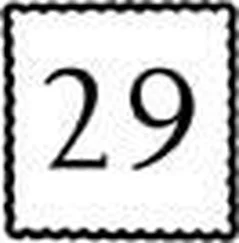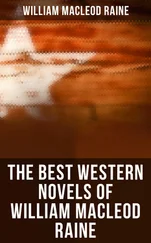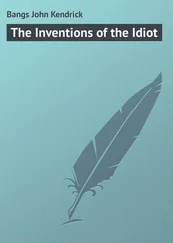William Doolittle - Inventions in the Century
Здесь есть возможность читать онлайн «William Doolittle - Inventions in the Century» — ознакомительный отрывок электронной книги совершенно бесплатно, а после прочтения отрывка купить полную версию. В некоторых случаях можно слушать аудио, скачать через торрент в формате fb2 и присутствует краткое содержание. Жанр: foreign_antique, foreign_prose, на английском языке. Описание произведения, (предисловие) а так же отзывы посетителей доступны на портале библиотеки ЛибКат.
- Название:Inventions in the Century
- Автор:
- Жанр:
- Год:неизвестен
- ISBN:нет данных
- Рейтинг книги:5 / 5. Голосов: 1
-
Избранное:Добавить в избранное
- Отзывы:
-
Ваша оценка:
- 100
- 1
- 2
- 3
- 4
- 5
Inventions in the Century: краткое содержание, описание и аннотация
Предлагаем к чтению аннотацию, описание, краткое содержание или предисловие (зависит от того, что написал сам автор книги «Inventions in the Century»). Если вы не нашли необходимую информацию о книге — напишите в комментариях, мы постараемся отыскать её.
Inventions in the Century — читать онлайн ознакомительный отрывок
Ниже представлен текст книги, разбитый по страницам. Система сохранения места последней прочитанной страницы, позволяет с удобством читать онлайн бесплатно книгу «Inventions in the Century», без необходимости каждый раз заново искать на чём Вы остановились. Поставьте закладку, и сможете в любой момент перейти на страницу, на которой закончили чтение.
Интервал:
Закладка:
To avoid the use of a separate apparatus for separate sizes of grain and other seed, the seed holder has been divided into parts – one part for containing wheat, barley and other medium-sized grains, and another for corn, peas and the larger seeds. And as these parts are used on separate occasions, the respective apertures are opened or closed by a sliding bottom and by a single movement of the hand.
Rubber tubes for conducting the seed through the hollow holes were introduced in place of the metal spouts that answered both as a spout and a hoe.
In place of the common hoe drill of a form used in the early part of the century, the hoes being forced into the soil by the use of levers and weights, what are known as "shoe drills" have largely succeeded. A series of shoes are pivoted to the frame, extend beneath the seed box, and are provided with springs for depressing or raising them.
All kinds of seeds and fertilisers, separately or together, may be now sown, and the broadcast sowing of a larger area than that covered by the throw of the hand can now be given by machinery.
Corn and cotton seed are thus also planted, mixed or unmixed with the fertilising material.
Not only have light ploughs been combined with small seed boxes and one or more seed tubes, for easy work in gardens, but the arrangements varied and graded for different uses until is reached that great machine run by steam power, in which is assembled a gang of heavy harrows in front to loosen and pulverise the soil, then the seed and fertilising drill of capacious width for sowing the grain in rows, followed by a lighter broad harrow to cover the seed, and all so arranged that the steam lifts the heavy frames on turning, and all controlled easily by the man who rides upon the machine.
In planting at intervals or in hills, as corn and potatoes, and other like larger seeds, no longer is the farmer required to trudge across the wide field carrying a heavy load in bag or box, or compel his boys or women folk to drop the seed while he follows on laboriously with the hoe. He may now ride, if he so choose, and the machine which carries him furnishes the motive power for operating the supply and cut-off of the grain at intervals.
The object of the farmer in planting corn is to plant it in straight lines about four feet apart each way, putting from three to five grains into each spot in a scattered and not huddled condition. These objects are together nicely accomplished by a variety of modern machines.
The planting of great fields of potatoes has been greatly facilitated by machinery that first slices them and then sows the slices continuously in a row, or drops them in separate spots or hills, as may be desired. The finest seeds, such as grass and clover, onion and turnip seed, and delicate seed like rice, are handled and sown by machines without crushing or bruising, and with the utmost exactness. Just what seed is necessary to be supplied to the machine for a given area is decided upon, and the machine distributes the same with the same nicety that a doctor distributes the proper dose of pellets upon the palm of his patient.
Transplanters as well as planters have been devised. These transplanters will dig the plant trench, distribute the fertiliser, set the plant, pack the earth and water the plant, automatically.
The class of machines known as cultivators are those only, properly speaking, which are employed to cultivate the plant after the crop is above the ground. The duties which they perform are to loosen the earth, destroy the weeds, and throw the loosened earth around the growing plant.
Here again the laborious hoe has been succeeded by the labour-saving machine.
Cultivators have names which indicate their construction and the crop with which they are adapted to be used. Thus there are "corn cultivators," "cotton cultivators," "sugar-cane cultivators," etc. Riding cultivators are known as "sulky cultivators" where they are provided with two wheels and a seat for the driver.
If worked between two rows they are termed single, and when between three rows, double cultivators. A riding cultivator adapted to work three rows has an arched axle to pass over the rows of the growing plants and cultivate both sides of the plants in each row. Double cultivators are constructed so that their outside teeth may be adjusted in and out from the centre of the machine to meet the width of the rows between which they operate. A "walking cultivator" is when the operator walks and guides the machine with the hands as with ploughs. Ordinary ploughs are converted into cultivators by supplying them with double adjustable mould boards. Ingenious arrangements generally exist for widening or narrowing the cultivator and for throwing the soil from the centre of the furrow to opposite sides and against the plant. The depth to which the shares or cultivator blades work in the ground may be adjusted by a gauge wheel upon the draught beam, or a roller on the back of the frame.
Disk cultivators are those in which disk blades instead of ploughs are used with which to disturb the soil already broken. As with ploughs, so with cultivators, steam-engines are employed to draw a gang of cultivating teeth or blades, their framework, and the operator seated thereon, to and fro across the field between two or more rows, turning and running the machine at the end of the rows.
Millet's recent celebrated painting represents a brutal, primitive type of a man leaning heavily on a hoe as ancient and woful in character as the man himself. It is a picture of hopeless drudgery and blank ignorance. Markham, the poet, has seized upon this picture, dwelt eloquently on its horrors, and apostrophised it as if it were a condition now existing. He exclaims,
"O masters, lords and rulers in all lands
How will the future reckon with this man?"
The present has already reckoned with him, and he and his awkward implement of drudgery nowhere exist, except as left-over specimens of ancient and pre-historic misery occasionally found in some benighted region of the world.
The plough and the hoe are the chief implements with which man has subdued the earth. Their use has not been confined to the drudge and the slave, but men, the leaders and ornaments of their race, have stood behind them adding to themselves graces, and crowning labor with dignity. Cincinnatus is only one of a long line of public men in ancient and modern times who have served their country in the ploughfield as well as on the field of battle and in the halls of Legislation. We hear the song of the poet rising with that of the lark as he turns the sod. Burns, lamenting that his share uptears the bed of the "wee modest crimson-tipped flower" and sorrowing that he has turned the "Mousie" from its "bit o' leaves and stibble" by the cruel coulter. The finest natures, tuned too fine to meet the rude blasts of the world, have shrunk like Cowper to rural scenes, and sought with the hoe among flowers and plants for that balm and strength unfound in crowded marts.
But the dignity imparted to the profession of Agriculture by a few has now by the genius of invention become the heritage of all.
While prophets have lamented, and artists have painted, and poets sorrowed over the drudgeries of the tillers of the soil, the tillers have steadily and quietly and with infinite patience and toil worked out their own salvation. They no longer find themselves "plundered and profaned and disinherited," but they have yoked the forces of nature to their service, and the cultivation of the earth, the sowing of the seed, the nourishment of the plant, have become to them things of pleasurable labour.
With the aid of these inventions which have been turned into their hands by the prolific developments of the century they are, so far as the soil is concerned, no longer "brothers of the ox," but king of kings and lord of lords.
Читать дальшеИнтервал:
Закладка:
Похожие книги на «Inventions in the Century»
Представляем Вашему вниманию похожие книги на «Inventions in the Century» списком для выбора. Мы отобрали схожую по названию и смыслу литературу в надежде предоставить читателям больше вариантов отыскать новые, интересные, ещё непрочитанные произведения.
Обсуждение, отзывы о книге «Inventions in the Century» и просто собственные мнения читателей. Оставьте ваши комментарии, напишите, что Вы думаете о произведении, его смысле или главных героях. Укажите что конкретно понравилось, а что нет, и почему Вы так считаете.












